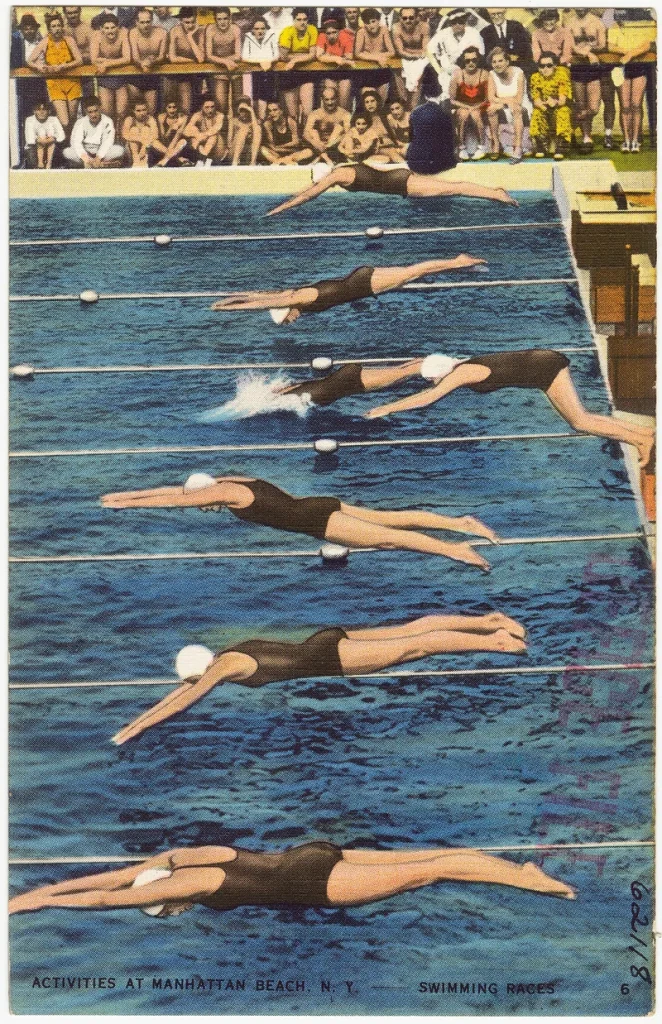The Artistic Swimming Olympics: A Symphony of Grace and Athleticism
Introduction
Artistic swimming, formerly known as synchronized swimming, is a captivating Olympic sport that combines the grace of dance with the athleticism of swimming. This sport is renowned for its artistic flair, demanding routines, and the seamless coordination of its athletes. This comprehensive guide delves into the history, evolution, key elements, and standout moments of artistic swimming in the Olympics.
Historical Overview
Artistic swimming has its roots in the early 20th century when it was performed as water ballet. The sport evolved into a competitive discipline in the 1930s and 1940s, with various clubs and organizations promoting synchronized routines. The first major competition was held in Chicago in 1940, and the sport continued to grow in popularity.
Artistic swimming made its Olympic debut at the 1984 Los Angeles Games as a women’s-only event, featuring solo and duet competitions. The team event was introduced in the 1996 Atlanta Games, and the sport was rebranded as “artistic swimming” in 2017 by the International Swimming Federation (FINA) to better reflect its artistic and athletic components.
Key Elements of Artistic Swimming

Artistic swimming is a sport that demands a unique blend of strength, endurance, flexibility, and artistry. Here are some of the key elements that define this Olympic discipline:
- Routines: Artistic swimming routines are carefully choreographed sequences performed to music. They include a combination of acrobatic movements, lifts, and synchronized patterns. There are three main types of routines: technical, free, and combination.
- Technical Routine: This routine includes required elements that must be performed in a specific order. It emphasizes precision and technique.
- Free Routine: The free routine allows for more creativity and artistic expression, with athletes choreographing their performances to showcase their strengths and originality.
- Combination Routine: This routine combines elements of both technical and free routines, typically performed in team events.
- Synchronization: Perfect synchronization is crucial in artistic swimming. Athletes must perform their movements in unison, creating a visually harmonious display. This requires extensive practice and a deep understanding of timing and rhythm.
- Endurance and Strength: Artistic swimmers need exceptional cardiovascular endurance to perform strenuous routines while holding their breath underwater. Additionally, strength is essential for executing lifts, acrobatic moves, and maintaining stability during intricate formations.
- Flexibility and Grace: Flexibility allows swimmers to perform complex movements and achieve elegant lines. Grace and fluidity in movements are essential for artistic expression and overall presentation.
- Choreography and Music: The choreography of routines is a critical aspect of artistic swimming. The choice of music, synchronization with the beat, and the integration of artistic elements all contribute to the overall performance.
Training and Preparation
The preparation for artistic swimming is rigorous and multifaceted. Athletes undergo extensive training to hone their skills and perfect their routines. Here’s an overview of the key components of their training regimen:
- Water Training: Swimmers spend hours in the pool practicing routines, working on synchronization, and refining their techniques. They also practice holding their breath and improving their underwater endurance.
- Strength and Conditioning: Strength training is essential for artistic swimmers to build the muscle necessary for lifts and acrobatic moves. Conditioning workouts improve cardiovascular endurance, which is crucial for sustaining high-intensity performances.
- Flexibility Exercises: Flexibility training includes stretching routines, yoga, and other exercises to enhance the range of motion and achieve the graceful lines required in artistic swimming.
- Choreography Sessions: Athletes work closely with choreographers to design and refine their routines. These sessions involve creating sequences, synchronizing movements to music, and integrating artistic elements.
- Mental Preparation: Mental toughness is vital in artistic swimming. Athletes practice visualization techniques, develop strategies for coping with stress, and work on maintaining focus during performances.
The Olympic Format
Artistic swimming at the Olympics features both duet and team events. The competition typically includes a preliminary round and a final round, with scores from both rounds determining the final standings. Here’s a breakdown of the Olympic format:
- Duet Competition: The duet competition consists of pairs of swimmers performing both a technical routine and a free routine. The scores from these routines are combined to determine the overall ranking.
- Team Competition: The team event involves a group of eight swimmers performing a free routine and a combination routine. The team’s total score is based on the execution, artistic impression, and difficulty of the routines.
- Judging Criteria: Performances are evaluated by a panel of judges who score based on execution, artistic impression, and difficulty. Execution scores reflect the precision and synchronization of movements, artistic impression scores assess the creativity and presentation, and difficulty scores consider the complexity of the routines.
Notable Olympic Performances

Artistic swimming has produced many memorable moments and standout performances in Olympic history. Here are a few highlights:
- United States Dominance (1984-1996): The United States dominated the early years of Olympic artistic swimming, winning gold medals in the solo and duet events at the 1984 and 1988 Games. Swimmers like Tracie Ruiz and Sarah Josephson became household names.
- Russian Supremacy (2000-Present): Russia has been the dominant force in artistic swimming since the 2000 Sydney Olympics. The Russian team has consistently won gold medals in both duet and team events, showcasing their exceptional skill and precision. Legendary swimmers like Anastasia Davydova and Natalia Ishchenko have set new standards for excellence.
- Iconic Routines: The sport has seen numerous iconic routines that captivated audiences and judges alike. Performances like the Spanish team’s 2008 Beijing routine, inspired by Salvador Dalí’s surrealism, and the Russian duet’s 2016 Rio routine, set to the music of Swan Lake, have left lasting impressions.
The Future of Artistic Swimming
The future of artistic swimming in the Olympics looks bright, with the sport continuing to evolve and attract new talent. Several trends and developments are shaping its future:
- Increased Diversity: Efforts are being made to promote greater diversity and inclusion in artistic swimming. This includes initiatives to encourage participation from athletes of different backgrounds and to increase the visibility of the sport globally.
- Technological Advancements: Advances in technology, such as underwater cameras and motion analysis software, are helping athletes and coaches refine their techniques and enhance performance.
- Innovation in Choreography: Choreographers are continually pushing the boundaries of creativity, incorporating new artistic elements and themes into routines. This innovation keeps the sport dynamic and engaging for audiences.
- Sustainability: As with many sports, there is a growing emphasis on sustainability in artistic swimming. This includes efforts to reduce the environmental impact of events and to promote eco-friendly practices within the sport.
Conclusion
Artistic swimming is a unique and captivating Olympic sport that combines the elegance of dance with the athleticism of swimming. From its early days as water ballet to its current status as a highly competitive discipline, artistic swimming has evolved into a showcase of skill, synchronization, and artistic expression. With its rich history, rigorous training, and unforgettable performances, artistic swimming continues to enchant audiences and inspire athletes around the world. As the sport looks to the future, it will undoubtedly maintain its place as one of the most beautiful and challenging events in the Olympic Games.




